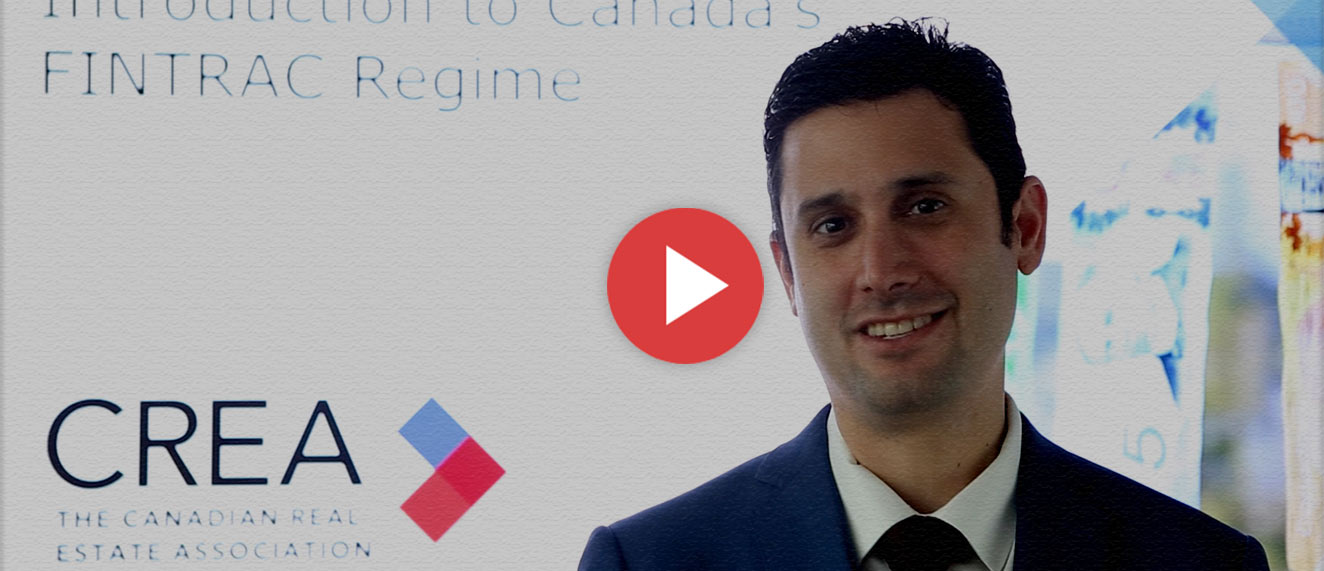New to the real estate industry? Welcome! Thank you for reading my blog post! If you don’t mind, please ask yourself whether you understand the following paragraph:
“So my CAMLO told me today that, as a DNFBP, we have obligations under the PCMLTFA and PCMLTFR. That means that if I receive more than 10K in cash I need to file a LCTR and if I see something suspicious, I need to file an STR using F2R. It’s all about KYC and mitigating ML/TF risks based on the brokerage’s RBA! And If we fail to comply? Yikes! We risk getting an AMP from FINTRAC - or worse.”
Get all that? Good. Now don’t screw anything up because there are significant penalties if you do.
I imagine as someone new to the real estate profession, you may have been surprised to discover you have significant obligations under Canada’s anti-money laundering and terrorist financing legislation. Your head is probably full of all sorts of good ideas you can use to grow your business and put into practice. So, when somebody throws a paragraph like the one I mentioned above at you, well, its probably a bit…intimidating, to put it mildly.
“Where do I begin with all this FINTRAC stuff?!” you may be wondering.
Well, CREA’s new Introduction to Canada’s FINTRAC Regime video will hopefully get you off to the right start. The video is chock-full of goodies from explaining why REALTORS® are required to do what they do under Canada’s anti-money laundering and terrorist financing laws, to the basics of record keeping and reporting. Whether you’re a new broker or a salesperson, if you’re curious about FINTRAC and want to learn more, check it out.

And if you’re extra-curious or want to really impress your friends at the next office trivia night, here’s an answer key for the acronyms I used in the paragraph above, which will help you navigate your legal obligations:
- CAMLO: Chief Anti-Money Laundering Officer. Your point person at the brokerage for FINTRAC Regime policies and procedures. Buy this valiant soul a coffee. …. make that two coffees.
- DNFBP: designated non-financial businesses and professions. A fancy term for groups outside of the banking sector, such as real estate brokers and sales representatives, that have obligations under Canada’s FINTRAC Regime.
- PCMLTFA and PCMLTFR: shorthand for Proceeds of Crime (Money Laundering) and Terrorist Financing Act and Proceeds of Crime (Money Laundering) and Terrorist Financing Regulations,which are colloquially referred to by some as Canada’s “FINTRAC regime”.
- LCTR: large cash transaction report.
- STR: suspicious transaction report.
- F2R: the online portal you’re required to use to submit a suspicious transaction report to FINTRAC.
- KYC: know your client.
- ML/TF: money laundering/terrorist financing.
- RBA: risk-based assessment. An assessment of a brokerage’s money laundering and terrorist financing risks that brokerages are required by law to periodically conduct.
- FINTRAC: The Financial Transactions and Reports Analysis Centre of Canada. Canada’s financial intelligence centre, which is dedicated to the detection, prevention and deterrence of money laundering and the financing of terrorist activities.
- AMPs: administrative monetary penalties. Something that should be high up on your list of things you never want to receive.
The article above is for information purposes and is not legal or financial advice or a substitute for legal counsel.






Hello, The links are not working and I also cannot find the video in the CREA Learning Hub. Any guidance you can offer to locate it will be helpful. Thank you.
Hi Amanda,
You can find the latest information in our most recent blog: https://www.creacafe.ca/changes-to-canadas-anti-money-laundering-laws-got-you-down-pep-up-here-are-some-tools-to-help-you-succeed/
You can find the video here: https://hub.realtorlink.ca/learn/catalog/view/217
All of our FINTRAC resources are also available on REALTOR Link®: https://www.realtorlink.ca/content/realtorlink/crea/en_CA/resources—compliance/legal-compliance—national-standards/compliance-resources/money-laundering.html